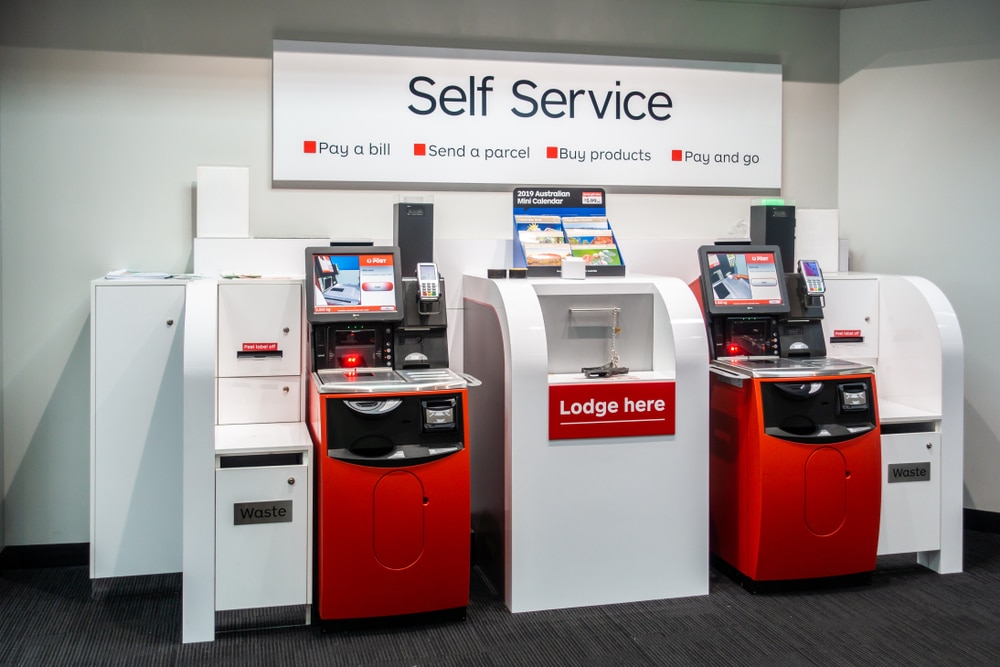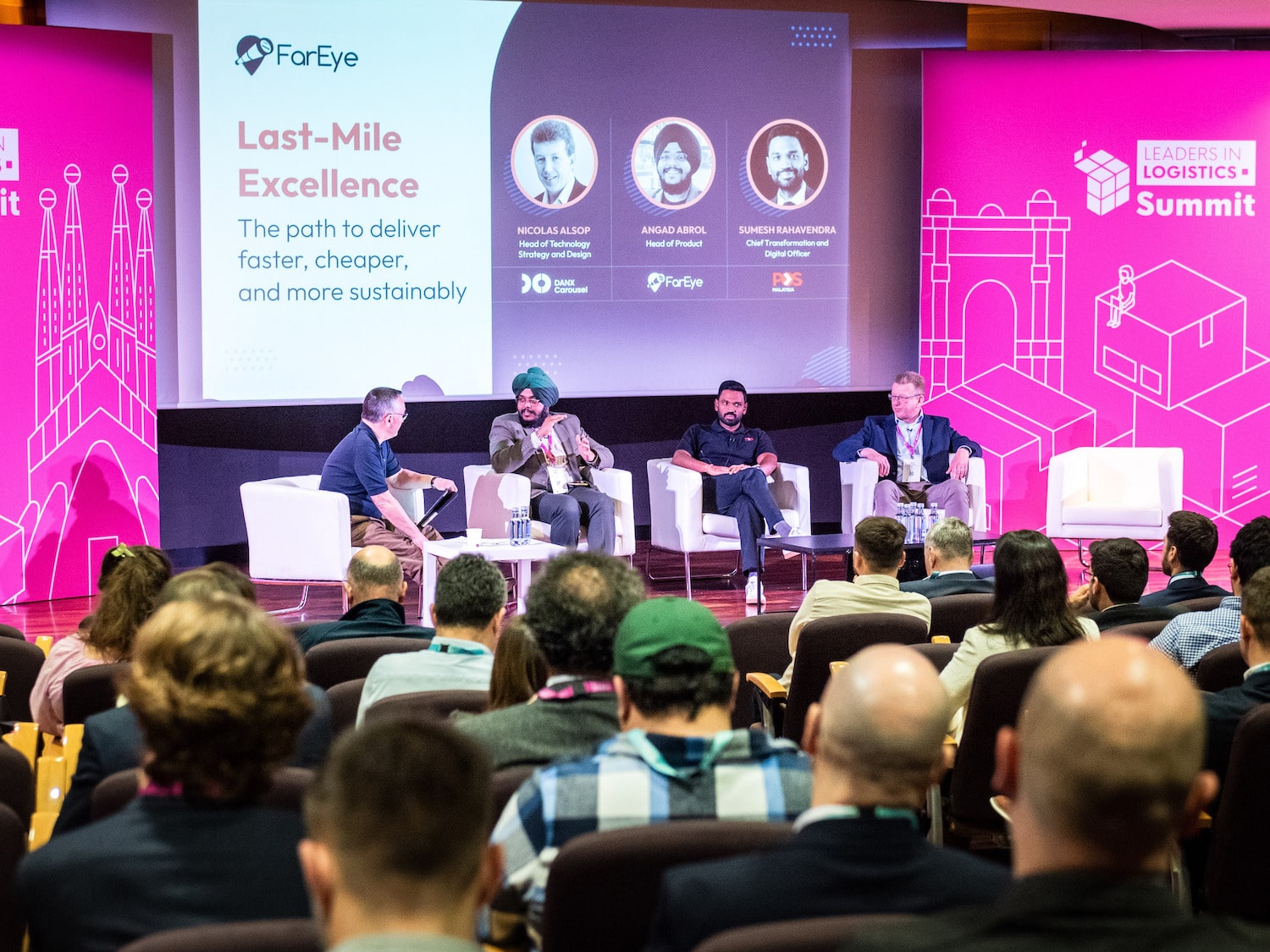Insight / Blog
A Last-Mile Roundtable with Doddle & Rory Sutherland

Summary: Some of the brightest minds in last-mile delivery joined Doddle in London to discuss changing consumer behaviour and the future of the last mile.
In the aftermath of the excellent Leaders in Logistics Last-Mile Summit in London, Doddle invited 15 or so of the most experienced and influential people in the last-mile delivery and out-of-home delivery space to join us for brunch and a morning of discussion with a special guest. We brought along advertising legend, author and a leading force in behavioural economics and ‘nudge theory’, Ogilvy Group’s vice chairman Rory Sutherland.
We’ve worked with Rory before, and his insights into the psychology of logistics (“psychologistics”) are always intriguing and spark conversation – the perfect pairing for a table of experts in their field to bounce ideas off and learn from each other.
Our discussion covered topics from the right metrics to measure, the challenges of changing consumer behaviour, and the future of carriers as impactful, digitally-enabled partners for merchants in ecommerce. In this blog, we’re going to do a quick survey of the topics and insights covered. If you’re interested in a full download on these topics, keep an eye out for an upcoming white paper which combines insights from the conference, this brunch roundtable and our webinar on changing consumer behaviour.
Delivery perceptions & the psychology of metrics
Rory opened the discussion with his perspective on the last-mile from ‘outside’ the industry. In Rory’s view, too many retailers see delivery (and logistics more broadly) as a cost centre, where the focus is cost reduction. However, this misses the potential for delivery to add a huge amount of value to the overall customer journey in ecommerce. The ultimate illustration of this is one of the most powerful brands in the world – Amazon Prime – built as it is upon the promise of fast and free delivery.
Rory argues that delivery and offering consumers the right range of choices of delivery option, is really about brand protection – and how preventing the “unhappy journey” for as many customers as possible is of vital importance. We discussed Rory’s recent comments on the Diary of a CEO podcast, where he highlighted the constant temptation for retailers to focus on adding positives rather than eliminating negatives. This, Rory said, is the reason we too often ignore the disproportionately bad impact of a bad delivery experience on a consumer’s propensity to shop again.
In this context, the group discussion highlighted how assumptions about consumers being obsessed with “free” and “fast” delivery, overlooks the importance of things like ‘control’, ‘trust’ and ‘consistency’ which are vitally important. If we change the conversation to looking at ways to remove the “unhappy journeys” (missed deliveries, damaged or stolen parcels, et cetera) then we might find unheralded benefits in slower or alternative delivery options, such as adding and promoting out-of-home delivery options to shoppers.
Doddle’s CRO Mike Richmond noted that something similar happens when retailers look at metrics to understand their delivery performance, contrasting a longer-term strategic emphasis versus a constant chase for short-term instant gratification of improving easily available metrics. The easiest things to measure are the things retailers (and arguably, carriers too!) are most likely to spend the most time working on. That doesn’t always correlate with the most important things to measure.
Consumer behaviour, control and home delivery
The group discussion shifted towards a discussion of consumer behaviour and preferences, with participants from the Nordic region sharing some particularly interesting data from their region:
-
The share of Norwegian deliveries going to OOH locations dropped from 85% in 2017 to 52% in 2021, as home delivery became a more widely-offered option during the COVID-19 lockdowns
-
In the Nordics, locker usage is a “sticky” habit, as users tend to become repeat users and have high CSAT, but capacity challenges are occurring due to the smaller nature of the locker banks there
As delivery options expand (in the Nordics and Scandinavian context, this usually means adding home delivery options to the checkout), it appears that not only choice, but the sense of control or predictability is important to consumers.
This is also bearing out in the data. In many online checkouts in the Nordics, consumers do not get presented with a home delivery option – they are only offered a service point delivery. When the checkout works this way, NPS is ‘mediocre’. However, if a website offers both home delivery and service point, the consumer chooses home delivery, and that home delivery fails and the consumer has to pick up the item from a service point anyway, the consumer has a drastically reduced NPS – despite the actual service received being the same as if they hadn’t been offered home delivery in the first place.
Failing
Failed deliveries are a classic “unhappy journey”, to use Rory’s term, and were a point of concern for all of our participants. It’s a cause of consumer frustration, but it’s also doubly expensive for the carrier to redeliver to home a second time. In some cases, even a failed delivery redirect to a local PUDO location still requires the parcel to return to the depot for relabelling, adding another day to the delivery time.
One major carrier in Northern Europe is experimenting with using AI to predict home delivery success – where the algorithm flags that a customer may not be at home, it triggers a text asking for confirmation that they’ll be able to accept delivery. This, alongside a focus on enabling “unattended” home delivery to designated safe places or doorsteps, is part of a strategic focus on ensuring first-time delivery success in order to reduce the overall costs of the home delivery proposition.
In the UK one leading carrier said that customers had become familiar with PUDO redirects after failed deliveries and were now happier to accept this rather than wait another day for a second home delivery attempt.
A ceiling on ecommerce vs the “default” for delivery
Rory then asked the group to consider whether there was a question implicit in our delivery conversations, one for the entire ecommerce category: how big can ecommerce be with the delivery ecosystem we have today? Or, in other words: does eCommerce has a ceiling with home delivery as the default?
This isn’t a thought any of us had had before, and prompted a real debate in the room with participants adding their personal and professional experiences to the discussion.
The debate took in both macro and micro contexts: in the macro sense, as an industry, are there are limits to the volumes of parcels we can and could deliver to individual households, especially in densely populated urban areas; and in the micro, as households, are there limits to how many parcels you can mentally and emotionally keep track of and manage the receipt of?
This latter point prompted an interesting discussion within the group, with all agreeing that there was a natural limit to parcels ‘in transit’ that we were all willing to accept. Interestingly, the debate also then moved onto whether PUDO removes some of that uncertainty and hesitation from consumers, or whether it’s the same regardless of delivery option.
Defaults
In the final discussion topic, the group focused on the impact of ‘default delivery options. Doddle’s Mike Richmond shared an anecdote from a Danish retailer, Bestseller, who tested a change in the checkout flow with their partner DHL, changing the default pre-selected delivery option to be parcel lockers instead of home delivery. By changing what was perceived as the ‘natural order’ there was an instant 7% shift towards parcel locker deliveries.
Delivering London founder and Stamp Free chairman Alan Barrie shared a similar example from ASOS in France, which resulted in an even bigger 30% swing to PUDO. As Doddle, we’re also familiar with some checkout data from the networks we power and merchants who integrated to those networks, where PUDO conversion rates have improved by anything between 1 and 18 percentage points depending on the merchant, thanks to the improved accessibility of the option and UX parity it receives with home delivery on the checkout.
There’s also an internal element to this within carrier businesses. One participant shared that there was an assumption that the market is primarily for and about next-day home delivery, leading to this being positioned as the flagship service, with PUDO “almost an afterthought” when it came to positioning services. While we’ve spoken at length recently on the importance of changing consumer behaviour and the levers available to do so, it seems that a version of this also needs to happen within carrier businesses to ensure that out-of-home delivery can achieve its potential.
A massive ‘thank you’ is in order for all of our participants for helping us create a productive and insightful discussion – only a fraction of which we’ve covered in this blog. If you’re interested in reading more, make sure to follow Doddle on LinkedIn and/or subscribe to our newsletter to get access to our upcoming white paper.
To find out how to join us for our next event, or to learn how Doddle can help you to develop your delivery and returns strategy and power your technology transformation, get in touch today.
Related articles
7 tactics to drive self-service parcel drop-off adoption
Focusing on parcel kiosks, we explore 7 tactics to encourage customer adoption and drive volume into out-of-home (OOH) delivery networks.
Important lessons from Leaders in Logistics 2024
Leaders in Logistics 24 dived into AI & automation, sustainability, changing ecommerce behaviours, emerging consumer expectations & predicted what the next decade had in store.
Postal results, reforms, and returns
Posts around the world are seeking reform, but how can they drive improved results in the short term?














